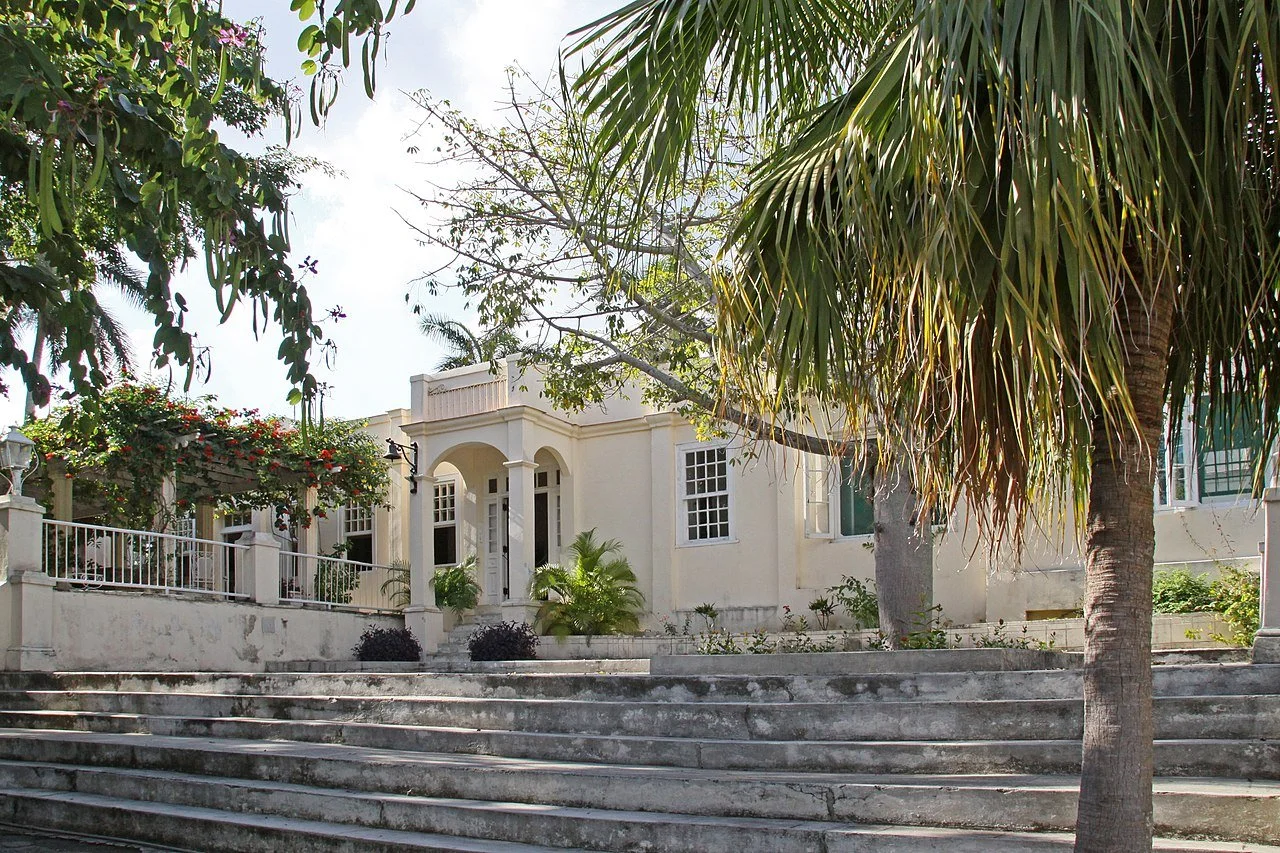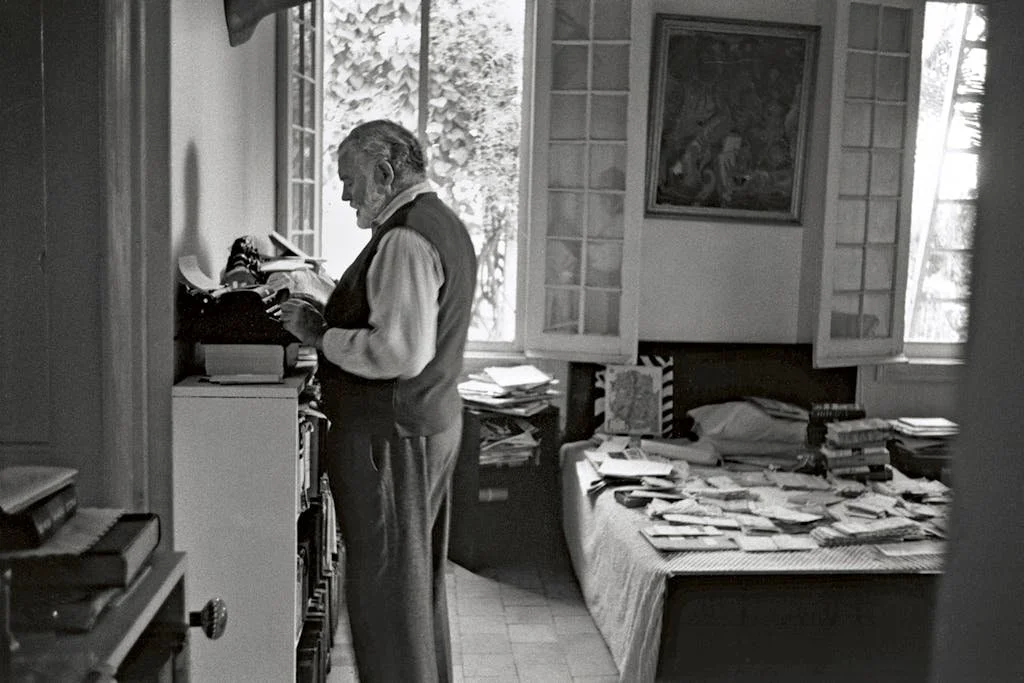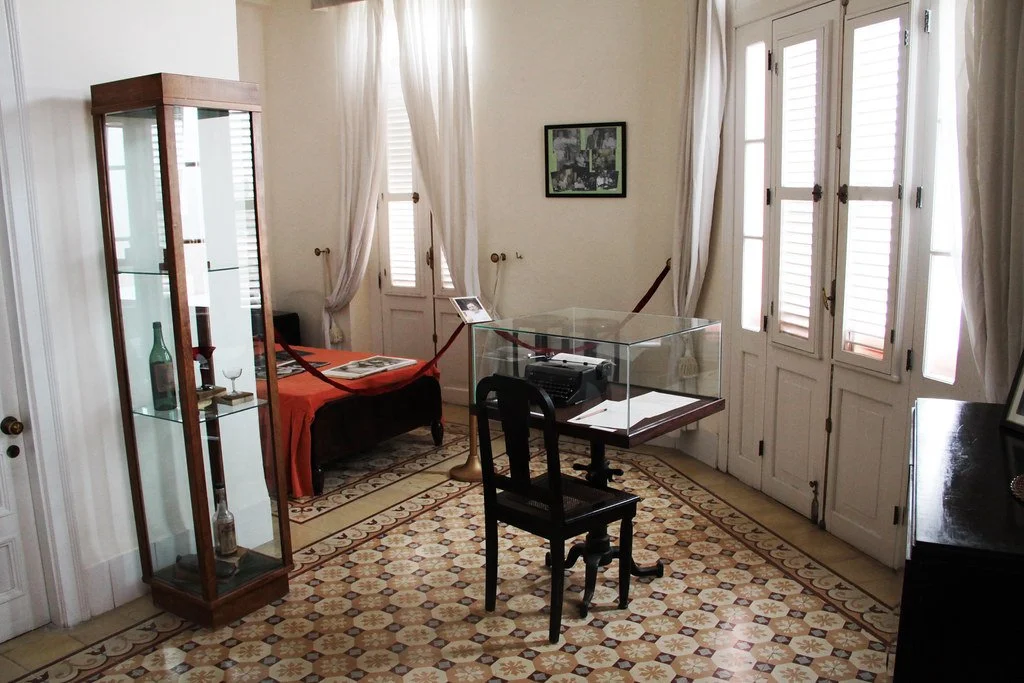Tracing Ernest Hemingway’s footsteps in Havana
The famous writer Ernest Hemingway shared a love affair with Cuba for more than 20 years and has left a trail of memories to be explored.
by Katharina Müller
18 July 2024
San Francisco de Paula is a neighborhood in Havana, 24 kilometers southeast of Havana’s city centre. Here, surrounded by trees and on top of a hill, lays US novelist Ernest Hemingway’s longtime residence Finca Vigía, ‘look-out farm’, now a museum. Overlooking distant Havana and the sea behind, this magnificent finca was designed and built in 1886 by Catalan architect Miguel Pascual y Baguer.
After having served in World War I, Ernest Hemingway arrived in Cuba with Martha Gellhorn, journalist and writer and his third wife—a visit that would spark Hemingway’s creative works, and a life-long love affair with Cuba. Hemingway, Papa locally known to Cubans, would write two of his most popular novels: The Old Man and the Sea and For Whom the Bell Tolls, a novel about the Spanish civil war which he had covered as a journalist before and that is said had inspired revolutionary leader Fidel Castro in his pursuit to arm his guerrilla forces and topple then President Fulgencio Batista.
When Martha Gellhorn first laid eyes on the finca in 1939, San Francisco de Paula was a remote village, far from the bustle of Cuba’s capital and Havana’s many bars. It was this exact remoteness, that she felt suited to build a home with Hemingway and drive her husband away from the many temptations, that is said Hemingway had a weakness for: alcohol and women. From 1939 to 1960, Hemingway lived and wrote in Finca Vigía, claiming he never worked anywhere better than in Cuba, until in 1960 when he left Cuba, allegedly under pressure from the US-American embassy after Fidel Castro came to power. Seemingly, he left the finca believing he would return. Until this day it is a home as one would leave for a long holiday, with left bottles, glasses, paperwork, painting – he even left his boat, the Pilar. His personal correspondence, manuscripts and more than 9000 books and around 3000 photographs have all provided intimate insights into Hemingway’s life. The finca would be his winter residence for the next fifteen years, which he shared with late wife Mary Welsh, who Hemingway married in 1945 and who became the ‘doyenne’. After Hemingway’s death, she was later allowed to return and collect a few documents and return with them to the US.
The light coloured walls are decorated with large and smaller frame paintings, stuffed animal heads–Hemingway was a devoted hunter-, there is heavy Cuban mahogany furniture filled with books. During the restoration process, scribbles were found on the wall behind the door, Hemingway noted his weight, sometimes with notes accompanying the numbers (‘after lunch’). The cool mornings in the overgrown garden made him ‘forget the many places he had been’, Hemingway would say. A year after leaving Cuba, he committed suicide in his home in Idaho, USA, using his favourite shot gun. After many years of abandonment and full of mold and damp Finca Vigía was restored by preservation architects.
The stories of the finca, however, live on. Personal recollections and photographs tell tales of many late dinners and nights held around the wooden table, with famous Hollywood guests–Katharine Hepburn, Errol Flynn and Spencer Tracey to name a few–, and friends or family. His children would visit him during summertime. Ava Gardner is said to have swum naked in the pool outside in the luscious overgrown garden, and Gary Cooper, actor of Hemingway’s televised novel For Whom the Bell Tolls was a guest at the fica and accompanied Hemingway to Havana’s many bars. It’s a home that tells many stories, it is also a house that seemed to be design to host, to forget the troubles in Hemingway’s life, that brought a certain stillness in his life.
In 1817, a bar opened with the name La Piña de Plata, ‘the silver pineapple’, located on the corner of Belgica and Obispo street. Since 1914, this bar is known under the name La Floridita, and is still one of Havana’s busiest bars, and many years ago, when intellectuals would frequent this corner bar, still located on the very same corner. Rumours have it, Ernest Hemingway walked into the bar in need of a toilette and had a Daiquiri, the standard frozen Daiquiri La Floridita, served. Prone to diabetes, Hemingway was conscious of his sugar consumption–”That’s good but I prefer it with less sugar and double rum”-and had minor alteration requests for the drink. Head bartender Constantino Ribalaigua Vert mixed a sugarless drink that would become Hemingway’s drink at the La Floridita: Heavy on the rum, with a splash of lime juice. For the ones who have a less sour palate, head bartender Antonio Meilan added maraschino and grapefruit to balance the sourness and created the drink that is now known as the Hemingway Special Daiquiri: 90 ml light Cuban rum, 1 spoon Maraschino liqueur, 30 ml Grapefruit juice, 15 ml fresh lime juice, and blend all ingredients with plenty of crushed ice. La Floridita, ‘small Florida’, is a popular bar. Its interior contrasts the outside noise in Havana’s centre, a certain familiar vintage style, modest, except for the large bronze statue of Hemingway paying tribute to its frequent guest. While Hemingway’s presence undeniable gained La Floridita world fame, there is another reason for its success. Head bartender Constantino Ribalaigua Vert was famous for his adventurous spirit behind the bar. In 1931, he created the daiquiri for the very first time which is why La Floridita also goes by the name ‘la cuna del daiquiri’, the cradle of the daiquiri.
In walking distance to the La Floridita, a comfortable 10 minutes stroll down Opiso street and close to the star like Castillo de la Real Fuerza de La Habana, a fort from the 16th century and now a museum, Hotel Los Ambos Mundos stands still and proud–an eyewitness. Built in 1924 on the grounds of a previously demolished family home, the now rose coloured hotel was Hemingway’s first refuge when arriving in Havana. On the upper floor, from 1932 to 1939, before Martha Gellhorn and Ernest Hemingway settled on Finca Vigía, he rented a room for US $1.50 a night-and US $1.75 for double occupancy. Here, in room 511, Ernest Hemingway would find refuge in 1932 and wrote For Whom The Bells Toll. Room 511, still open to the public and turned into a sort of a museum, is a charming room, homely: Tiled floors and white long colonial style windows with light and elegant white curtains draped around them are timelessly elegant. There’s a single bed with orange covers positioned neatly in a corner between two dark wooden bedside tables, a wooden table with a writing machine on top and a few documents scattered next to it. Photography in the lobby of Hotel Ambos Mundos, are a homage to the writer—a mutual gesture in all of the places he used to visit frequently for his 28 years in Cuba.
Behind the cathedral and four blocks from the Museo de la Revolution in Calle Empredado, lays the small restaurant and bar La Bodeguita de Medio. The entrance behind house number 207 is rather inconspicuous, its blue murals are recognisable. In 1942, Angel Martínez opened the bar located Calle Empredado, a long street with one house attached to another, its name a testimony: The small bar in the middle. Upon entrance, a small square room with a dark bar opens which leads to a larger dining room under an Andalusian vault. Above the bar and in midst colourful bottles—Martini and Cinzano—highlighted in a glass frame, it says My mojito in La Bodeguita, My daiquiri in El Floridita. Underneath it: Hemingway’s curved signature—allegedly. There is some controversy about the truthfulness of Ernest Hemingway actually and frequently visiting La Bodeguita. Nonetheless, “the small bar in the middle” used to be a popular spot and stop for intellectuals, many of them can be found eternalised with their signature on La Bodeguita’s walls, a museum of living memory. There’s little room between the tables, it’s filled and lively—it feels like a public Cuban home serving flavourful Cuban dishes with names like moros y cristianos or frejoles negros dormidos. Should La Bodeguita Medio’s famed mojito not be enough for the thirsty visitor, La Floridita is only a very short distance away.
Hemingway shared a passion for the sea and fishing, and befriended local fishermen, among them Gregoria Fuentes, who is believed to be the inspiration for the writer’s novella The Old Man and the Sea, for which in 1954, Hemingway won the Nobel Prize in Literature "for his mastery of the art of narrative, most recently demonstrated in The Old Man and the Sea, and for the influence that he has exerted on contemporary style". He donated the metal to the Cuban people. His boat, the Pilar, which he took to sea often, was restored to its original form. The fishing village Cojímar, now a suburb and around 15 kilometres from Havana, he kept his boat, the Pilar, which he took to sea often and which was restored to its original form. Before and after his fishing trips, he would visit La Terrazza de Cojímar often and lots of photographs are memories of his visit. Amongst them, a photograph depicting him and Fidel Castro during a fishing competition, which Castro won. After Hemingway’s death, Gregoria Fuentes was asked to look after the Pilar, which would be sitting in Cojímar’s harbour for many years.
Even when he lived with Martha Gellhorn and later with Mary Welsh at Finca Vigía, he would drive to La Floridita for a drink, to La Bodeguita for lunch and many a margarita, or to the sea fishing after having worked in the morning, standing in front of his typewriter propped up on a bookshelf. And so, no matter who you talk to or how you think of Hemingway, a story about Ernest Hemingway almost always starts and ends with these three things: Books, drinks and the sea.



